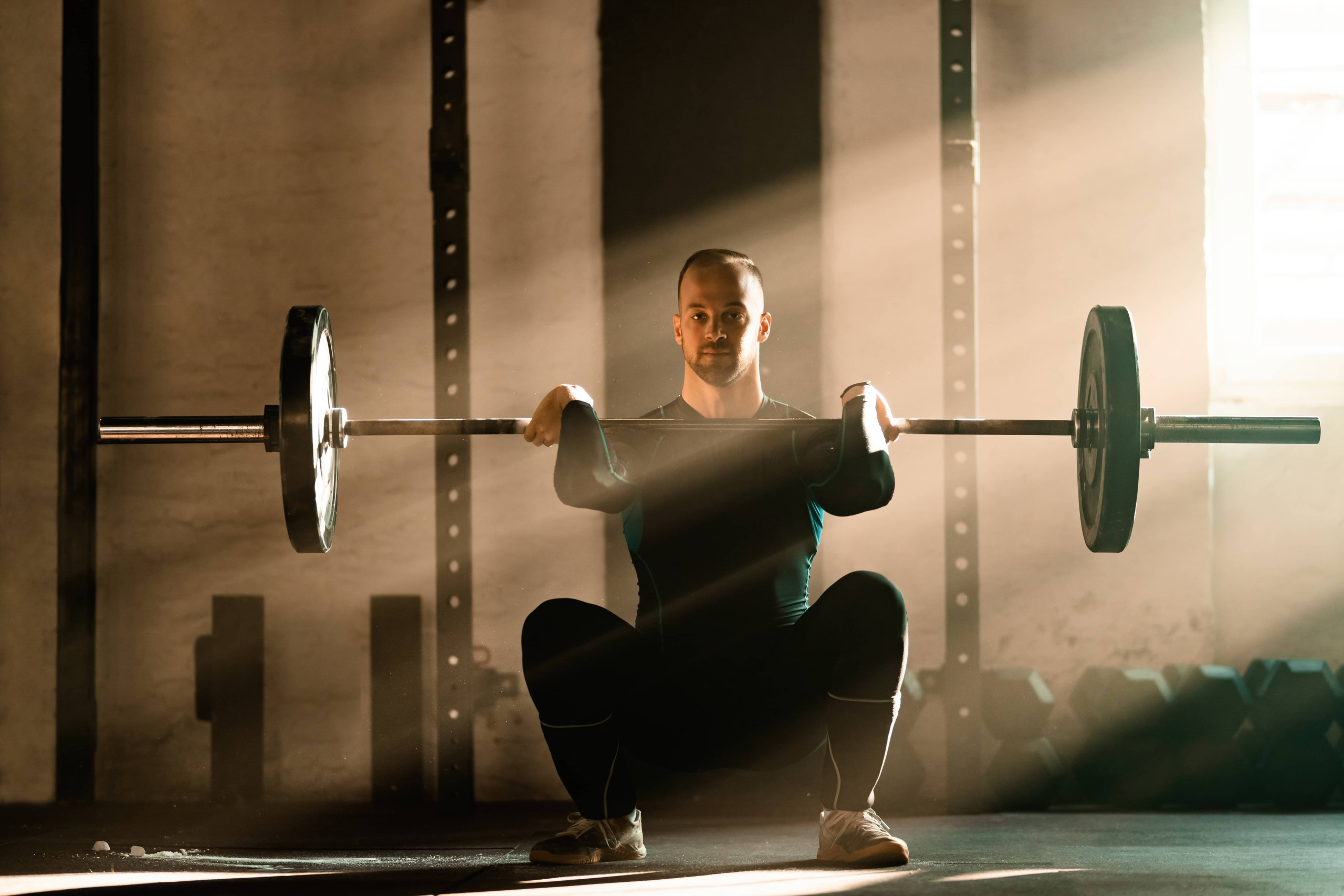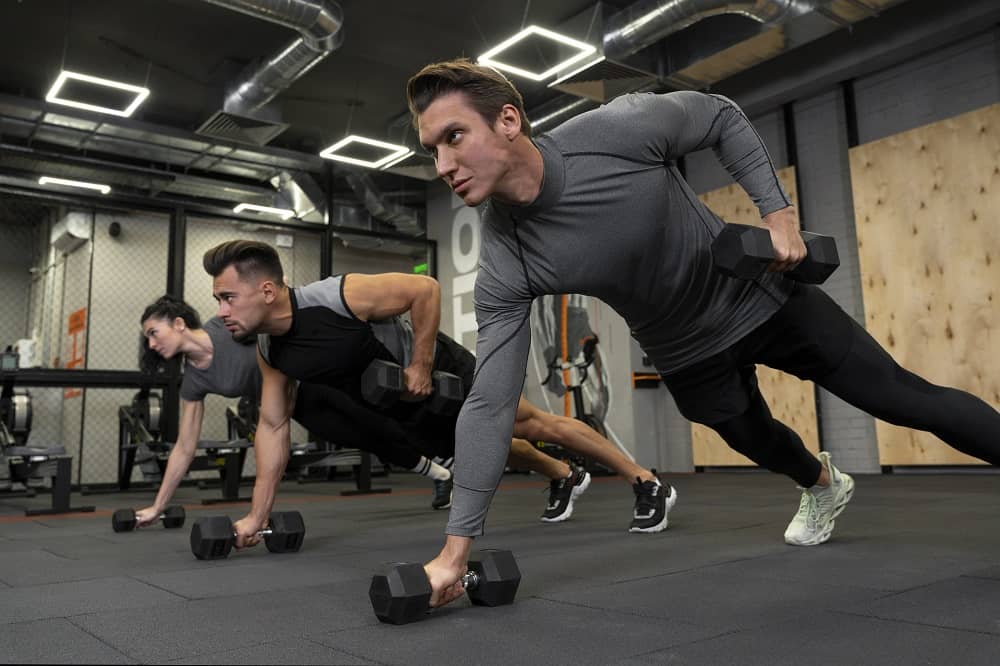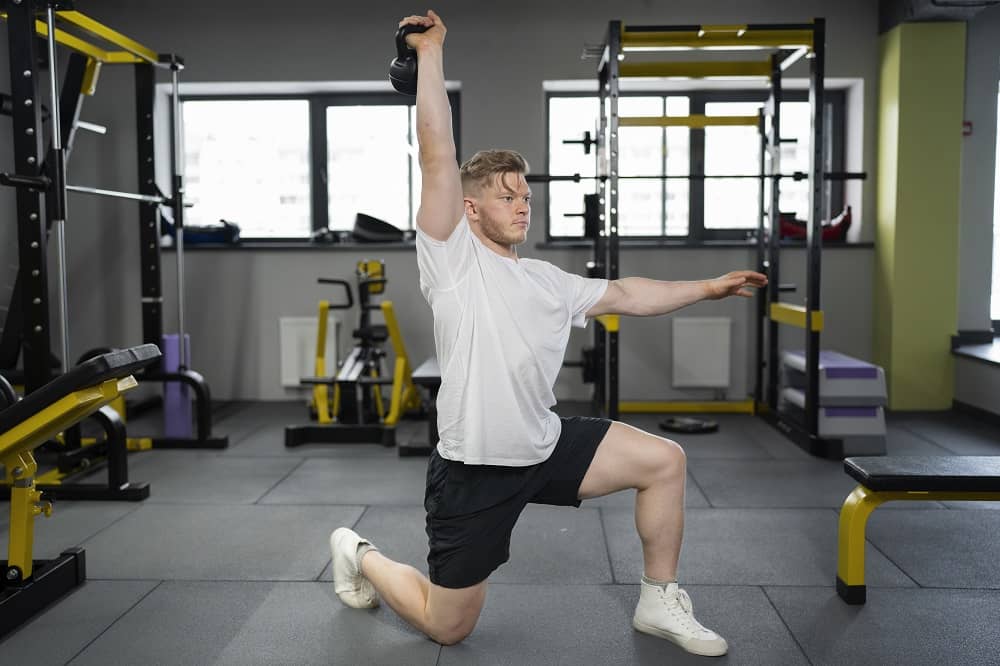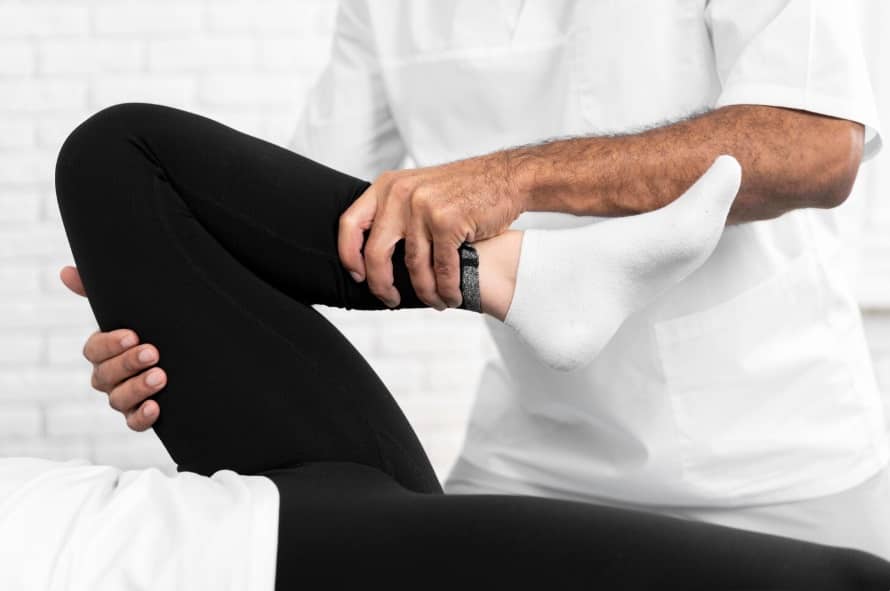by Mo Adams
Share
by Mo Adams
Share

Dynamic stretching is a powerful method of improving mobility, flexibility, and overall physical performance. Unlike static stretching, which involves holding a stretch for an extended period, dynamic stretching involves active movements that take your muscles and joints through a full range of motion. This form of stretching is particularly useful for enhancing Dynamic stretching for function—the type of movement you perform in daily life or during exercise.
At CrossFit Golden Valkyrie, we understand the importance of dynamic stretching in building a strong foundation for functional movement. This article will explore the benefits of dynamic stretching, how it helps improve function, and how to incorporate it into your workout routine.
What is Dynamic Stretching?
Dynamic stretching refers to a type of stretching where the muscles and joints are actively moved through their full range of motion. Unlike static stretching, which is done by holding a position for an extended period, dynamic stretching involves movement, often mimicking the physical activity you plan to perform. This type of stretching helps prepare the body for physical activity by improving flexibility, joint mobility, and overall muscle performance.
Some examples of dynamic stretching include leg swings, arm circles, high knees, and walking lunges. These movements activate muscles, increase blood flow, and improve coordination, making them ideal for warming up before exercise.
The Importance of Dynamic Stretching for Function
Dynamic stretching for function is crucial for improving how your body performs everyday activities and athletic movements. Here’s why dynamic stretching plays such a vital role in enhancing functional movement:
- Increases Joint Mobility and Flexibility
Dynamic stretching promotes the movement of joints through their full range of motion, increasing flexibility and joint mobility. This is particularly important for functional movement, as many activities require your joints to move through various ranges of motion. Dynamic stretches such as walking lunges or hip circles engage the hip flexors, knees, and ankles, preparing them for the movements you’ll perform during exercise or daily tasks. - Activates Muscles for Better Performance
Dynamic stretching involves active muscle engagement, helping to activate the muscles you will use during physical activity. These movements improve muscle responsiveness, increasing your overall strength, stability, and endurance. For example, performing leg swings before running activates the hip flexors and hamstrings, allowing for better stride mechanics and less risk of injury. - Improves Coordination and Balance
Dynamic stretches often require balance and coordination. Exercises like high knees or lateral lunges challenge your proprioception (the ability to sense your body’s position), improving your overall body control. Enhanced coordination is vital for Dynamic stretching for function, as it allows for smoother transitions between movements and better overall performance. - Reduces the Risk of Injury
Incorporating dynamic stretching into your routine helps increase blood flow to your muscles and joints, warming up the body for more intense physical activity. By preparing your muscles and joints, dynamic stretching reduces the risk of strains and sprains, which are common injuries that occur when muscles are tight and unprepared for exertion. - Prepares the Body for High-Intensity Workouts
If you’re engaging in high-intensity workouts like CrossFit, strength training, or running, dynamic stretching is essential for performance. It primes the body for explosive movements, such as jumping, sprinting, or lifting heavy weights. Dynamic stretches help to activate the neuromuscular system, enhancing both strength and speed during your workout.
Read more: Kettlebell Functional Workouts: Unlocking Full-Body Strength and Mobility
Effective Dynamic Stretching Exercises for Function
To maximize Dynamic stretching for function, it’s important to include dynamic stretches that target all the major muscle groups. Here are some effective dynamic stretching exercises that help improve flexibility, mobility, and performance:
1. Leg Swings
Leg swings are an excellent dynamic stretch that targets the hip flexors, hamstrings, and quads. This movement helps improve the range of motion in the hips and legs, which is essential for running, squatting, and other athletic movements.
How to do it:
- Stand next to a wall or support for balance.
- Swing one leg forward and backward, gradually increasing the range of motion.
- Perform 10-15 swings per leg.
2. Walking Lunges
Walking lunges are a full-body dynamic stretch that targets the hip flexors, quads, hamstrings, and glutes. This movement improves flexibility in the lower body and helps activate muscles for better balance and mobility.
How to do it:
- Step forward into a lunge, ensuring that your knee is aligned with your ankle.
- Push off the front foot and bring your back leg forward into the next lunge.
- Continue for 10-12 steps per leg.
3. Arm Circles
Arm circles are a simple dynamic stretch that helps warm up the shoulders and improve shoulder mobility. This exercise is essential for shoulder health, particularly before exercises like overhead presses or pull-ups.
How to do it:
- Stand with your arms extended out to the sides.
- Begin making small circles, gradually increasing the size of the circles.
- Perform for 30 seconds in each direction.
4. High Knees
High knees are a great dynamic stretch that activates the hip flexors, quads, and core while improving cardiovascular endurance. This exercise is great for preparing the body for running, sprinting, or other high-intensity exercises.
How to do it:
- Stand tall with your feet hip-width apart.
- Lift one knee toward your chest, then alternate legs as you march in place.
- Focus on driving your knees high and engaging your core.
- Continue for 30 seconds to 1 minute.
5. Lateral Lunges
Lateral lunges target the inner thighs, glutes, and hips, improving flexibility and stability in the lower body. This dynamic stretch is essential for functional movements like squatting and lateral movements in sports.
How to do it:
- Step out to the side with one leg, bending the knee and lowering your hips toward the floor.
- Keep the other leg straight and push your hips back.
- Push through the bent leg to return to standing, and repeat on the other side.
- Perform 10-12 reps per side.
6. Hip Circles
Hip circles are a great dynamic stretch to improve hip mobility and flexibility. They are particularly useful for preparing the body for squats, deadlifts, and running.
How to do it:
- Stand with your feet shoulder-width apart and your hands on your hips.
- Rotate your hips in a circular motion in one direction for 10-15 reps.
- Switch directions and perform the movement for the same number of reps.
How to Incorporate Dynamic Stretching into Your Routine
Incorporating dynamic stretching for function into your routine can be done in several ways. Here’s how to effectively integrate dynamic stretches into your fitness regimen:
1. Warm-Up for Every Workout
Dynamic stretching should be included in your warm-up before any workout. Spend 5-10 minutes performing dynamic stretches to activate the muscles and prepare the body for the physical demands of your workout. Focus on the muscle groups you’ll be using most during your session.
2. Include Full-Body Movements
When performing dynamic stretching, include exercises that target multiple muscle groups, such as walking lunges or leg swings. This will help improve flexibility and mobility in all areas of the body, ensuring balanced movement patterns.
3. Gradually Increase Intensity
As you become more accustomed to dynamic stretching, gradually increase the intensity and range of motion of the exercises. Start with gentle movements and build up to larger, more explosive stretches to increase flexibility and mobility over time.
4. Cool Down with Static Stretching
After your workout, cool down with static stretching to lengthen muscles and improve flexibility further. Static stretches are more effective after exercise, as your muscles will be warmed up and more receptive to lengthening.
Conclusion
Dynamic stretching for function is essential for improving mobility, flexibility, and performance. By incorporating dynamic stretching into your routine, you can enhance your range of motion, activate muscles for better performance, and reduce the risk of injury. Whether you’re preparing for a high-intensity workout or simply aiming to improve your functional movement, dynamic stretching is an effective tool to help you reach your goals.
At CrossFit Golden Valkyrie, we emphasize the importance of dynamic stretching in our training programs. Our expert trainers guide you through exercises that enhance mobility, improve balance, and prepare your body for optimal performance. Start incorporating dynamic stretching into your routine today and unlock your full movement potential.
FAQs
1. How long should I do dynamic stretching?
You should perform dynamic stretching for 5-10 minutes before your workout, focusing on the muscle groups that will be used during your session.
2. Can dynamic stretching help improve athletic performance?
Yes, dynamic stretching enhances flexibility, mobility, and muscle activation, all of which contribute to improved athletic performance in sports and physical activities.
3. Is dynamic stretching suitable for beginners?
Absolutely! Dynamic stretching can be modified for all fitness levels. Beginners should start with simpler movements and gradually increase the intensity and complexity of the stretches as their flexibility and mobility improve.
STAY IN THE LOOP
Subscribe to our free newsletter.
At CrossFit Golden Valkyrie, we believe in empowering you with strength workouts that transform your body and mind. Resistance training, the foundation of true strength, involves challenging your muscles with various activities – from lifting weights to mastering bodyweight exercises. Think of it as forging your own resilience, one rep at a time. Key compound exercises like
At CrossFit Golden Valkyrie, whether you’re just starting your fitness journey or looking to enhance your results, a well-rounded fitness training plan is essential for reaching your goals. To create a balanced routine, incorporate these five key elements into your fitness training program: 1. Aerobic Fitness Aerobic activity, also known as cardio, forms the foundation
At CrossFit Golden Valkyrie, we believe nothing compares to a solid session of exercises for functional strength. The rush of lifting heavy loads and pushing through high-volume reps brings a sense of power and fitness like no other. No matter your athletic background or fitness level, exercises for functional strength are key to enhancing physical
At CrossFit Golden Valkyrie, we believe that true fitness isn’t just about lifting heavy or running fast; it’s about building a body that moves well, feels good, and stays active for a lifetime. And at the heart of that philosophy lies the critical importance of joint health and mobility. Many people, as they age or push




